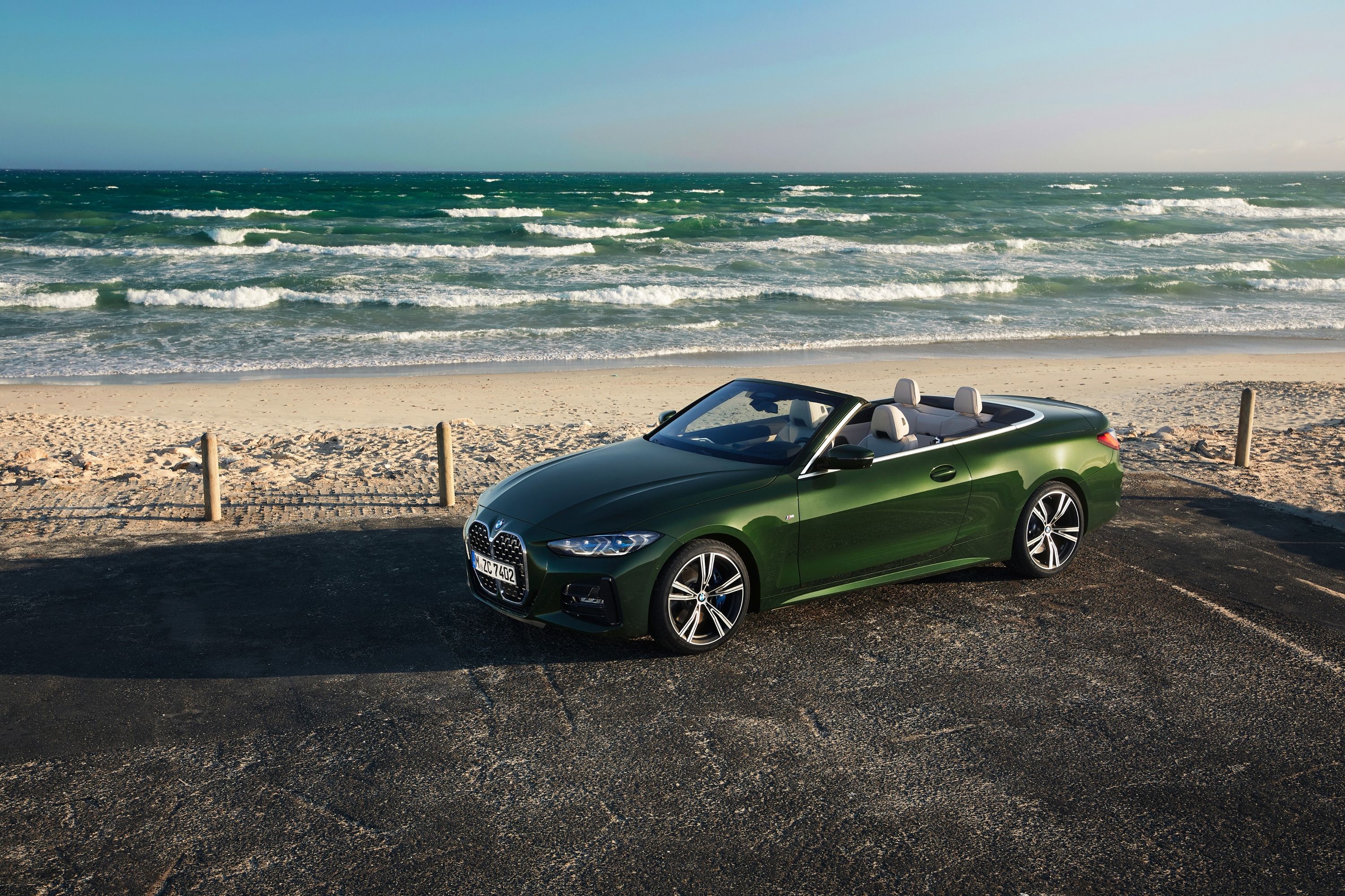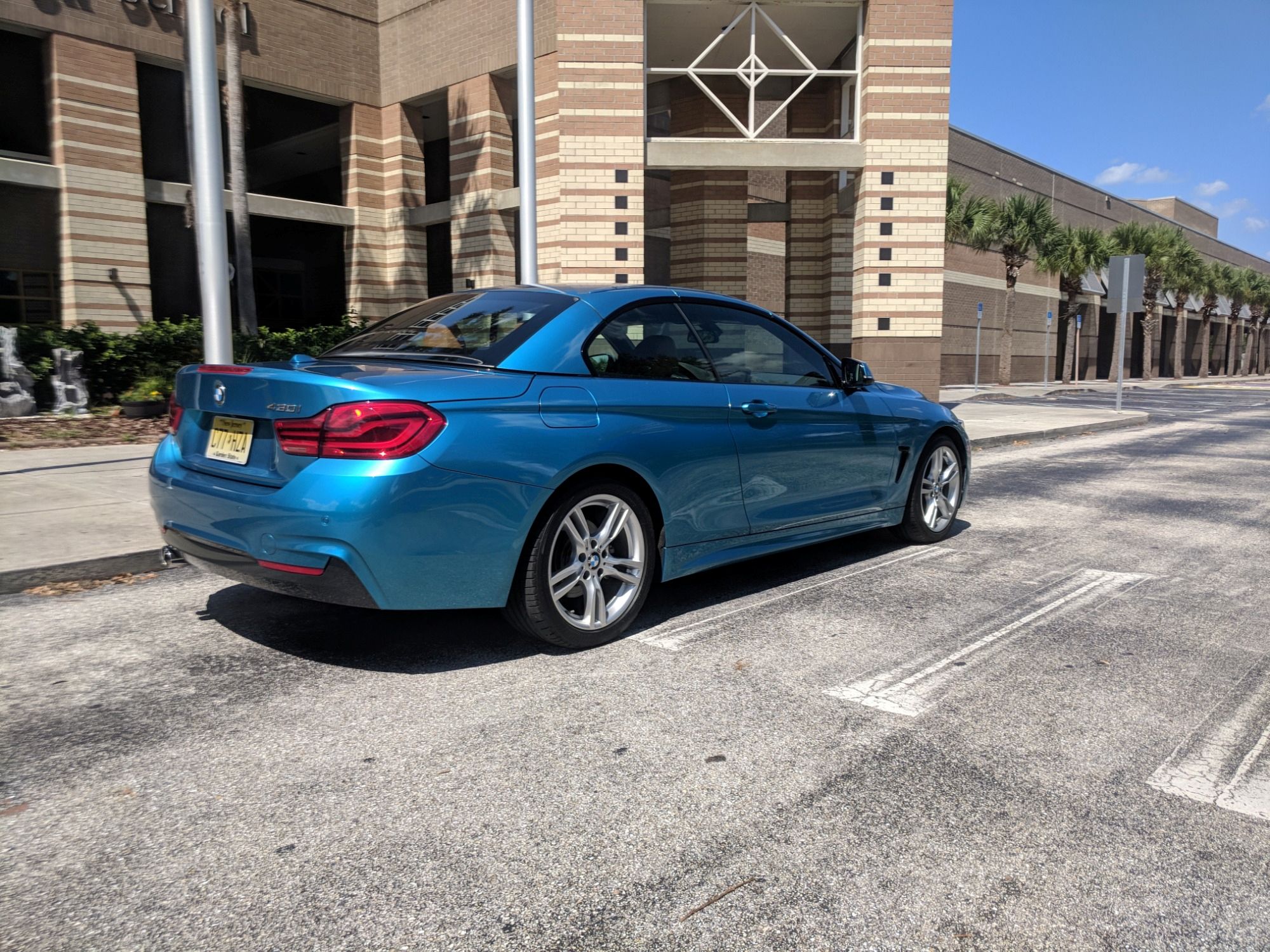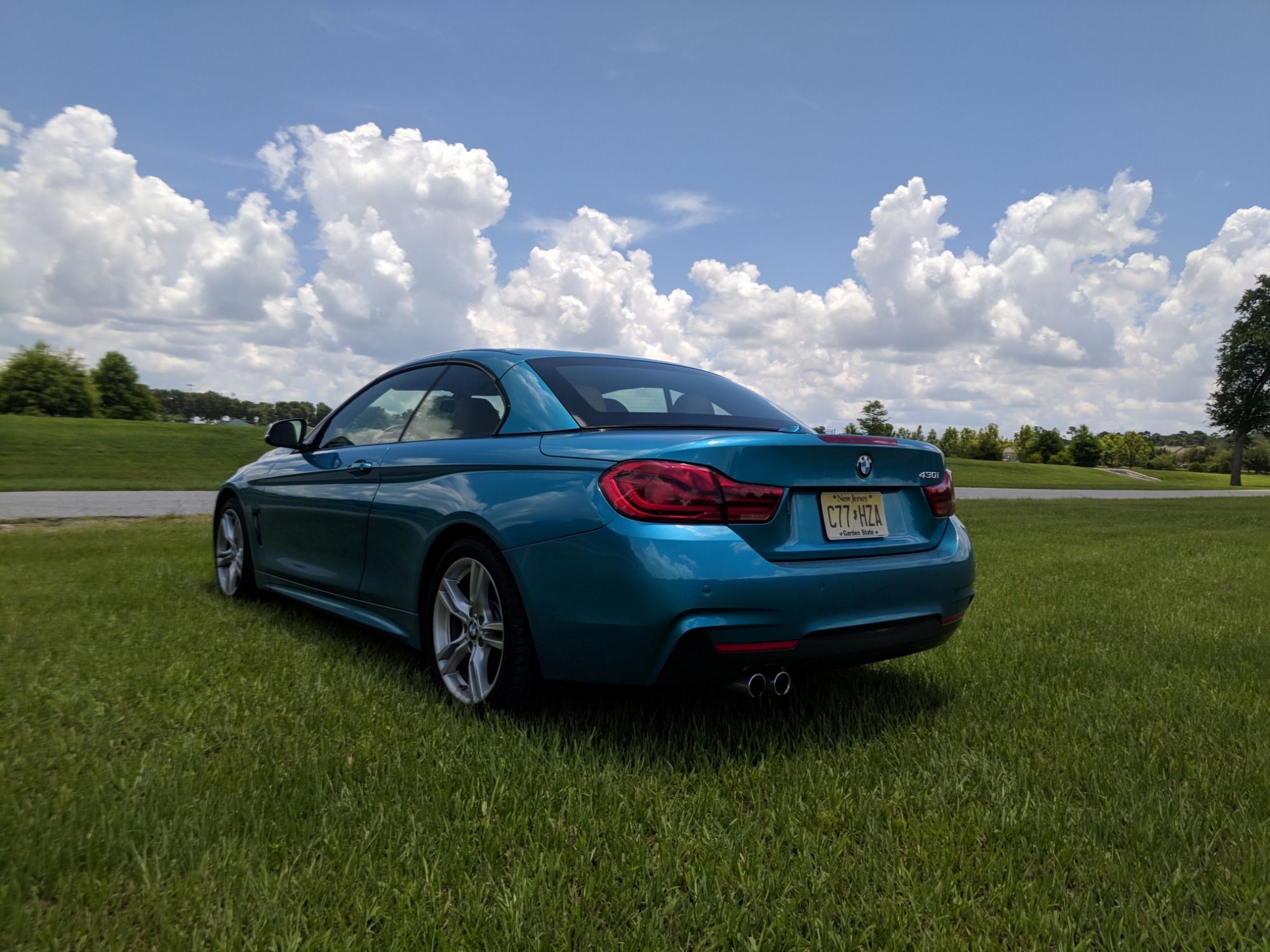2019 BMW 4 Series Convertible Review: Top-Down Fun Comes At A Price
Drive past any BMW dealership, and you will likely notice a sea of silver, white, and black sedans and SUVs, with the occasional M car painted in a bright hue. So when you cross paths with the BMW 430i Convertible – painted in a unique shade called Snapper Rocks Blue Metallic – you may be tempted to take a test drive. This $550 optional color reminds me a bit of the teal offered on the third generation Camaro IROC-Z, and that isn't the only thing about this BMW that feels like it's from the 1980s.
At its core, BMW values the thrill of driving, even if some of its models have drifted away from this belief in the pursuit of luxury. The 4 Series is nearing the end of its life cycle, but BMW has attempted to keep it fresh with some minor updates.
Even devoted BMW enthusiasts will need a keen eye to notice the changes on the 4 Series for the 2019 model year. The front and rear fascias feature new light designs with LED bulbs, and there are some new wheel designs too. BMW has also introduced two new colors - Sunset Orange and Snapper Rocks Blue (which was on my test car). M-specific colors typically derive their names from race tracks, but Snapper Rocks Blue was named after a beach in Australia. Under the hood, the 430i sports a 2.0-liter turbocharged four-cylinder mill, good for 248 horsepower and 258 lb-ft of torque. That power goes down to the rear wheels, though all-wheel drive is available.
An eight-speed ZF automatic sends the power to the rear wheels, and acts well when you decide to shift it yourself using the steering wheel-mounted paddle shifters. BMW offers a six-speed manual on the 430i coupe, but the convertible is auto-only. If you are looking for the sportiest four-pot 4 Series, the coupe is your best bet. The folding convertible roof adds around 460 pounds to the overall weight of the car, and about half a second to the 0-60 time. BMW says the 430i convertible will hit 60 mph in 6.0 seconds, compared to 5.5 seconds in the lighter coupe. And the convertible penalties don't stop there.
The starting price for the 430i convertible is a rather eye-watering $51,450, plus a $995 destination fee. For reference, that's about $8,000 more than the coupe. As much as I love convertibles, if you asked me if the folding metal roof is worth an $8,000 premium over the coupe, I'd tell you to just roll down the windows and plan a luxury vacation to Mexico with the money you saved. Not only will you be able to get plenty of fresh air on your $8,000 vacation, you'll forgo the cumbersome roof configuration on the convertible. Ever since the previous generation 3 Series convertible, BMW has been keen on offering a folding metal roof rather than a conventional soft top.
In a four-seat convertible, all of that metal and glass has to go somewhere, and in this case it's the trunk. With the roof up, trunk space is an acceptable 13 cubic feet, though the convertible apparatus divides the trunk into less usable segments. Fold the roof down, and the trunk practically disappears to less than eight cubic feet of space. As with most convertibles, the top requires a divider to be placed in the down position. When the metal roof is down, it sits over the divider, so the only way to reach your items is to engage a built-in process that lifts the roof up and allows you to open the divider.
The whole process is tedious, and needlessly complicated. If it were up to me, I'd opt for a traditional folding soft top, which is lighter and far less complex. It may not be as secure or weather-proof as the hardtop, but modern soft tops are remarkably durable and well-insulated. This would also fix an issue I have with the car's looks. The 4 Series itself is a very handsome car, but the C-pillar of the convertible looks a bit awkward to my eye. Since BMW doesn't sell a soft-top version of the 4 Series, my argument may seem like a moot point. However, BMW does make another four-seat convertible equipped with a fabric roof.
If you haven't already guessed, I'm referring to the 2 Series Convertible. The base 230i Convertible starts at $40,750, which is around $10,000 less than the equivalent 430i. Like the 430i, the 230i is powered by BMW's 2.0-liter engine mated to an eight-speed automatic transmission. The 2 Series achieves an identical 24 mpg city, 34 mpg highway, and 27 mpg combined, and even hits 60 mph in 5.4 seconds (0.6 seconds quicker than the 4 Series). In fact, the more powerful M240i convertible starts at $50,050 (which is still less than the 430i convertible), and packs 335 hp from a 3.0-liter turbocharged inline-six. For around the same money, the M240i Convertible is quicker and sportier than the 430i.
It seems obvious that the 2 Series is the better value, but it is a bit smaller and stiffer than the 4 Series, which may turn off some buyers. The 4 Series is also a far more aggressive looking car, whereas the 2 Series is more cute and huggable. The 4 Series Convertible's main competition (aside from the 2 Series across the showroom) comes from Audi and Mercedes-Benz. The Audi A5 Cabriolet is slightly cheaper than the 4 Series Convertible, and offers a bit more power, standard all-wheel-drive and better available technology. The Mercedes C300 Cabriolet costs around the same, but comes with a far more elegant interior than the BMW.
I mentioned at the beginning of the review that the 430i had more than just an '80s color, as it feels rather outdated compared to its competitors. The A5 features Audi's high tech Virtual Cockpit display, which replaces traditional gauges with a high-res configurable screen. Likewise, the updated 2019 C-Class will feature a screen where the speedometer and tachometer used to sit. By contrast, the 4 Series relies on old-fashioned gauges, which make the cabin feel old compared to competitors. There is a basic helper screen in the gauge cluster to read out trip information, as well as an optional head-up display to show radio and speed information.
Overall, the 4 Series suffers from a dated feel that is more than aesthetic. My test car came equipped with around $12,000 worth of options, adding up to an as-tested price of $63,310. That's about $3,000 less than a base M3, and don't think that for that price the 430i is a technological tour-de-force. Even expensively equipped, this 4 Series lacked basic features that are found on most midsize sedans in 2018. A list of absent features includes: adaptive cruise control, blind spot monitoring, lane keep assist, lane departure warning, automatic emergency braking, Android Auto, ventilated seats, and a surround-view camera.
The biggest option packages on my test car were the Premium Package and the M Sport Package, both costing $2,300. The Premium package adds lumbar support, heated front seats (real leather was an additional $1,550), navigation, real-time traffic information, and remote services. The latest version of iDrive used to control everything was very intuitive, and the voice command powered by Google was one of the best I've sampled, making this package well worth the cost. The M Sport pack is less of bargain. It includes 18-inch wheels, sport seats, aluminum trim, LED fog lights, an M steering wheel, aerodynamic kit, and shadow exterior trim.
My test car also had an added adaptive suspension for $700. The M Sport Package certainly makes the 4 Series look more aggressive, and dresses up the interior, but it seems unnecessary on the base-engine car. If this was the more powerful 440i, the M Package would be a better fit, but on a laid-back cruiser like the 430i, it just seems like a waste. At this point it may seem like I dislike the 4 Series, which isn't strictly true. In fact, it is still one of the best cars to drive in its segment, despite its age. Since Alfa Romeo doesn't make a convertible version of the Giulia, the 4 Series is certainly one of the best driving convertibles in this segment.
The electric steering rack is still extremely communicative, though not as good as the old hydraulic units you used to get on BMW cars. Steering effort is a bit heavy in normal mode, which is only made worse when you toss it into Sport mode. As I drive more and more new vehicles, I am starting to be turned off by the prospect of adjustable steering. I only want one steering feel in my sports car: good. The effort in Normal mode is perfectly acceptable, but Sport mode takes the place of a trip to the gym. Likewise, the suspension is just stiff enough to be acceptable as a daily driver, but becomes annoying in its Sport setting.
I doubt too many convertible 4 Series owners will play with the car's various modes, and fewer will venture to take their car to a track. The 430i convertible is more of a comfortable cruiser than a backroad barnstormer, and it is perfectly happy sitting in Normal mode getting around 35 mpg on the highway. Go light on the throttle, and you'll easily get over 400 miles on a tank of gas in the 430i. There are plenty of cheaper four-seat convertibles on the market, including the Ford Mustang and Chevy Camaro, as well as BMW's own 2 Series. Unless you simply must have a hardtop, I'd look elsewhere for my four-seat convertible – at least until the next generation arrives.



